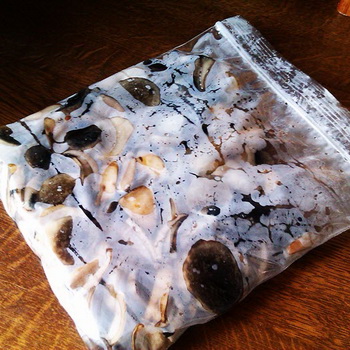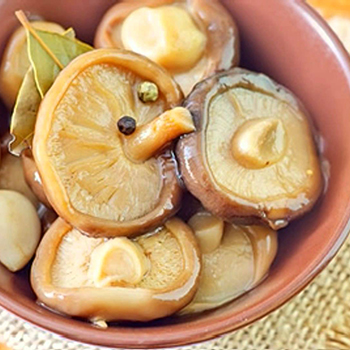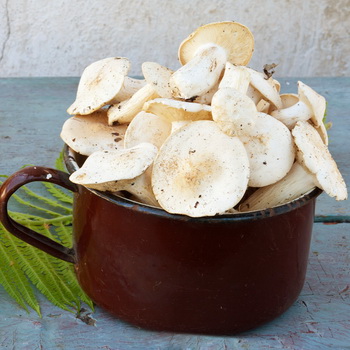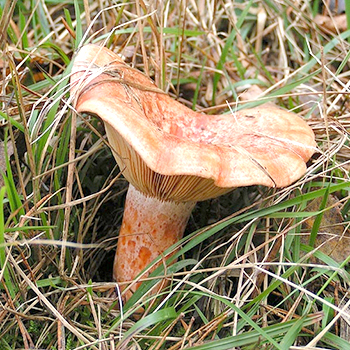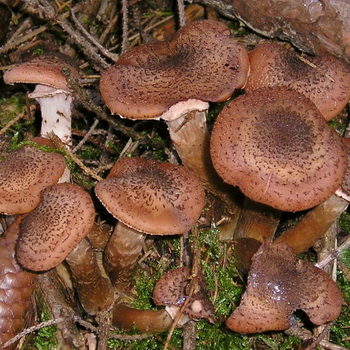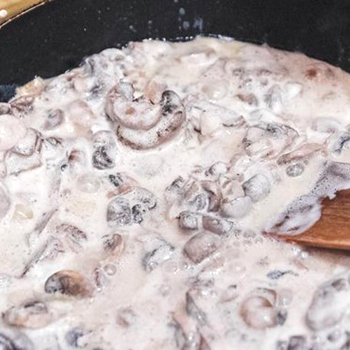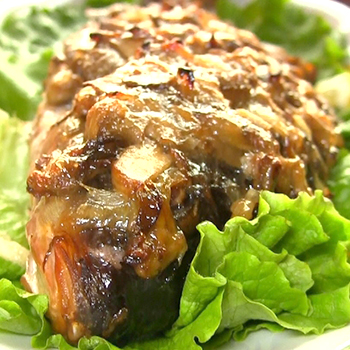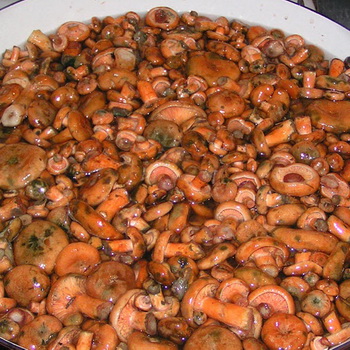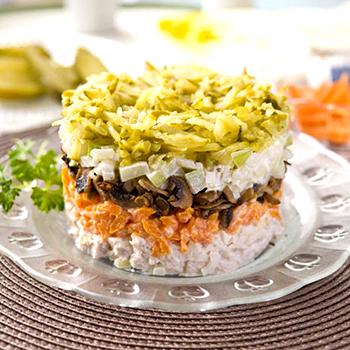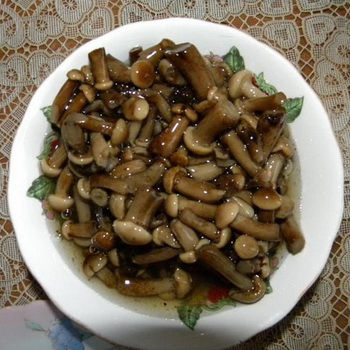Mushroom false valui: photo and description, how to distinguish it from the real
 For the territory of Russia, a false valui is common in forests and fields. It grows in large groups in the autumn, so many confuse it with edible value and russula, which leads to poisoning.
For the territory of Russia, a false valui is common in forests and fields. It grows in large groups in the autumn, so many confuse it with edible value and russula, which leads to poisoning.
In scientific reference books, the false Valui is called ghebeloma sticky, and among the people it was dubbed the “shitty mushroom”. Its toxins have characteristic features that give an idea of \ u200b \ u200btoxicity.
Visual photos and descriptions of false value mushrooms will help make a difference from edible species.
What a false value looks like and how to distinguish it from a real one
Latin name:Hebeloma crustuliniforme.
Family: Stropharia.
Synonyms: "Horseradish mushroom", false Valui, crusty gebeloma.


Hat: up to 10 cm in diameter, has a neatly convex shape and turned up edges. In adulthood, the cap bends inward and becomes dense. The surface is smooth but sticky, yellow in color with white edges. Sometimes there are hats with a reddish and even brick shade.
Leg: diameter up to 2.5 cm, height up to 9 cm, white-fawn shade, with a thickening towards the base and a powdery coating.


Pulp: thick, compacted, with a bitter taste and an unpleasant smell of fresh radish. The color of the flesh is creamy or white; in adulthood, the shade becomes darker.
Plates: adherent and often located, gray or white in young specimens, brown-yellow with light margins in old fruiting bodies. Drops of exudate are visible over the entire surface of the plates, which, when dried, turn black.
Edibility: a poisonous mushroom with an unpleasant odor and bitter pulp.
Similarities and differences: Hebeloma sticky or Valui false has similarities with some poisonous counterparts: Gebeloma coal-loving, Gebeloma girded and Gebeloma mustard.
Coal-loving is distinguished by its small size, a dark-colored hat, a soft leg and a place of growth - in burnt-out areas of the forest.
The belted one is distinguished by a brown cap, as well as a thinner leg.
Mustard is distinguished by its smaller size, sparse plates and a practically non-sticky surface of the cap.
Goebelum sticky mushroom pickers are often confused with edible russula. A distinctive feature is an unpleasant and pungent smell of horseradish gebeloma at the site of a cut or break. Therefore, if you hear an unpleasant aroma while plucking the fruiting body, do not take it under any circumstances.
The information provided will help you see how to distinguish a false value from a real one in order to protect yourself and your loved ones from the negative consequences of using it.
Spreading: grows throughout Russia, preferring moist, light soil on the open edges of deciduous and coniferous forests, as well as on the sides of forest roads. Fruiting time is from mid-August to early November. Prefers to form mycorrhiza with aspen, birch and oak roots. It can be found in the Caucasus, Central Asia and even Australia.
After reading the description of false valuey, and having learned what these mushrooms look like, you can safely go into the forest and collect edible species.

